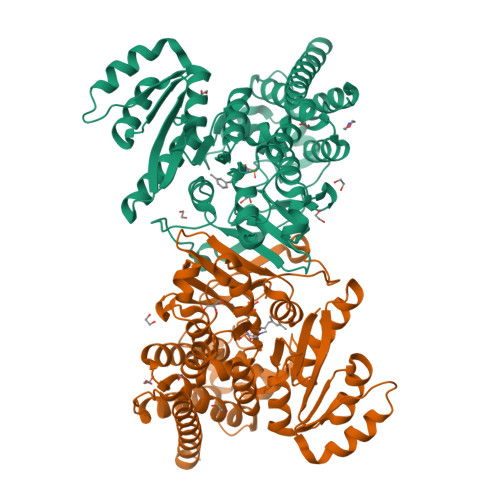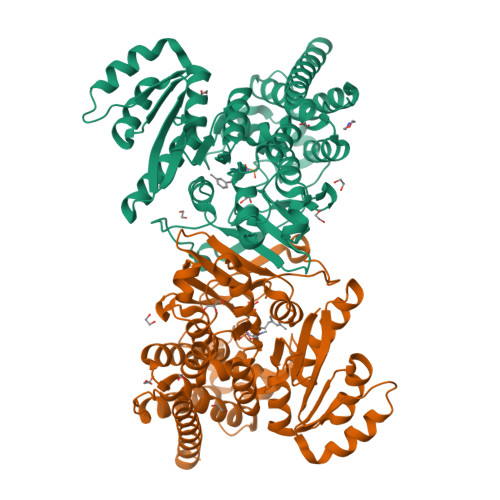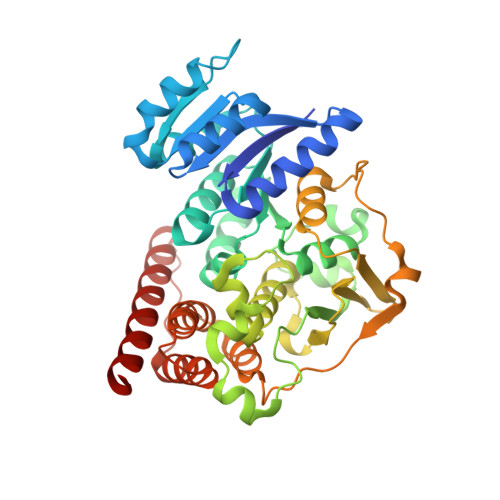Targeting an Aromatic Hotspot in Plasmodium falciparum 1-Deoxy-d-xylulose-5-phosphate Reductoisomerase with beta-Arylpropyl Analogues of Fosmidomycin.
Sooriyaarachchi, S., Chofor, R., Risseeuw, M.D., Bergfors, T., Pouyez, J., Dowd, C.S., Maes, L., Wouters, J., Jones, T.A., Van Calenbergh, S., Mowbray, S.L.(2016) ChemMedChem 11: 2024-2036
- PubMed: 27487410
- DOI: https://doi.org/10.1002/cmdc.201600249
- Primary Citation of Related Structures:
5JAZ, 5JBI, 5JC1, 5JMP, 5JMW, 5JNL, 5JO0 - PubMed Abstract:
Blocking the 2-C-methyl-d-erythrithol-4-phosphate pathway for isoprenoid biosynthesis offers new ways to inhibit the growth of Plasmodium spp. Fosmidomycin [(3-(N-hydroxyformamido)propyl)phosphonic acid, 1] and its acetyl homologue FR-900098 [(3-(N-hydroxyacetamido)propyl)phosphonic acid, 2] potently inhibit 1-deoxy-d-xylulose-5-phosphate reductoisomerase (Dxr), a key enzyme in this biosynthetic pathway. Arylpropyl substituents were introduced at the β-position of the hydroxamate analogue of 2 to study changes in lipophilicity, as well as electronic and steric properties. The potency of several new compounds on the P. falciparum enzyme approaches that of 1 and 2. Activities against the enzyme and parasite correlate well, supporting the mode of action. Seven X-ray structures show that all of the new arylpropyl substituents displace a key tryptophan residue of the active-site flap, which had made favorable interactions with 1 and 2. Plasticity of the flap allows substituents to be accommodated in many ways; in most cases, the flap is largely disordered. Compounds can be separated into two classes based on whether the substituent on the aromatic ring is at the meta or para position. Generally, meta-substituted compounds are better inhibitors, and in both classes, smaller size is linked to better potency.
Organizational Affiliation:
Science for Life Laboratory, Department of Cell and Molecular Biology, Uppsala University, Biomedical Center, Box 596, 751 24, Uppsala, Sweden.























